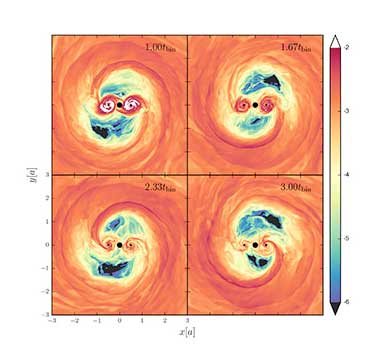 A new simulation of supermassive black holes uses a realistic scenario to predict the light signals emitted in the surrounding gas before the masses collide.
A new simulation of supermassive black holes uses a realistic scenario to predict the light signals emitted in the surrounding gas before the masses collide.
Feb 15th, 2018
Read more
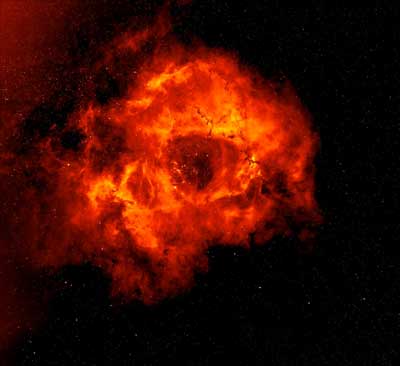 A hole at the heart of a stunning rose-like interstellar cloud has puzzled astronomers for decades. But new research offers an explanation for the discrepancy between the size and age of the Rosetta Nebula's central cavity and that of its central stars.
A hole at the heart of a stunning rose-like interstellar cloud has puzzled astronomers for decades. But new research offers an explanation for the discrepancy between the size and age of the Rosetta Nebula's central cavity and that of its central stars.
Feb 13th, 2018
Read more
 Laser experiments verify 'turbulent dynamo' theory of how cosmic magnetic fields are created.
Laser experiments verify 'turbulent dynamo' theory of how cosmic magnetic fields are created.
Feb 9th, 2018
Read more
 Scientists are enlisting the help of 'pillownauts' to push back the boundaries of space travel in a new study to examine a potentially serious adverse effect of weightlessness on the human body.
Scientists are enlisting the help of 'pillownauts' to push back the boundaries of space travel in a new study to examine a potentially serious adverse effect of weightlessness on the human body.
Feb 8th, 2018
Read more
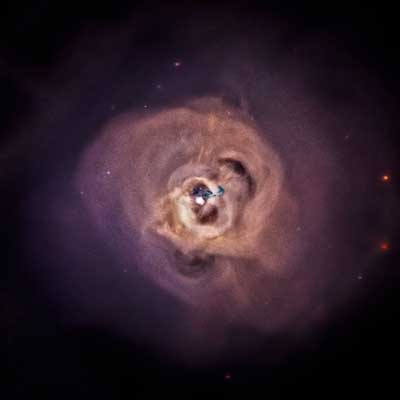 Physicists propose a new theory of dark matter based on the detection of unusual x-ray radiation from galaxies.
Physicists propose a new theory of dark matter based on the detection of unusual x-ray radiation from galaxies.
Feb 8th, 2018
Read more
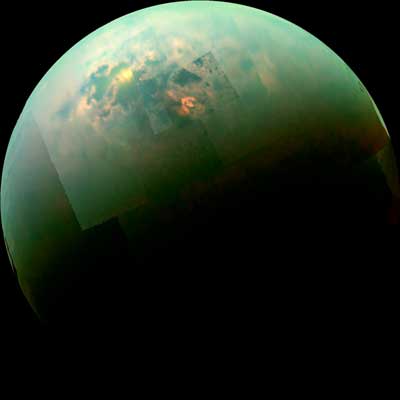 Working in a -300 F ocean of methane and ethane has its challenges.
Working in a -300 F ocean of methane and ethane has its challenges.
Feb 7th, 2018
Read more
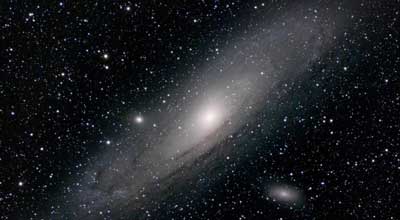 Researchers have discovered a mechanism that explains the persistence of asymmetrical stellar clusters surrounding supermassive black holes in some galaxies and suggests that during post-galactic merger periods, orbiting stars could be flung into the black hole and destroyed at a rate of one per year.
Researchers have discovered a mechanism that explains the persistence of asymmetrical stellar clusters surrounding supermassive black holes in some galaxies and suggests that during post-galactic merger periods, orbiting stars could be flung into the black hole and destroyed at a rate of one per year.
Feb 1st, 2018
Read more
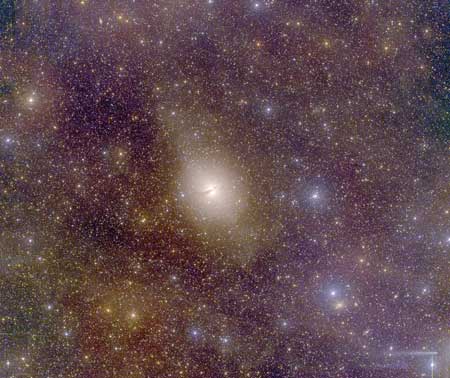 An international team of astronomers has determined that Centaurus A, a massive elliptical galaxy 13 million light-years from Earth, is accompanied by a number of dwarf satellite galaxies orbiting the main body in a narrow disk.
An international team of astronomers has determined that Centaurus A, a massive elliptical galaxy 13 million light-years from Earth, is accompanied by a number of dwarf satellite galaxies orbiting the main body in a narrow disk.
Feb 1st, 2018
Read more
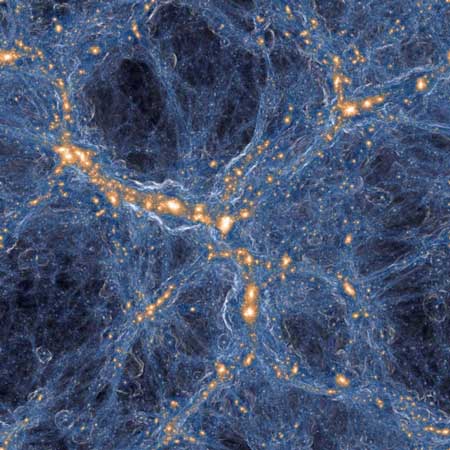 An international team of astrophysicists has released IllustrisTNG, the most advanced universe model of its kind.
An international team of astrophysicists has released IllustrisTNG, the most advanced universe model of its kind.
Feb 1st, 2018
Read more
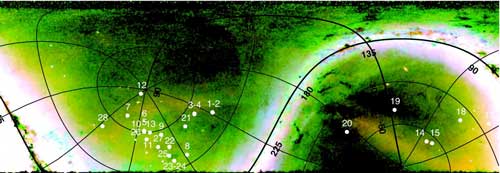 An international team of astronomers finds signs that the outer halo of the Milky Way contains stellar remains of massive dwarf galaxies that were devoured by our own.
An international team of astronomers finds signs that the outer halo of the Milky Way contains stellar remains of massive dwarf galaxies that were devoured by our own.
Jan 31st, 2018
Read more
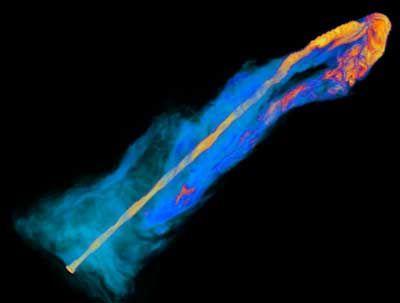 An international group of scientists has discovered a peculiar spiral jet with many twists.
An international group of scientists has discovered a peculiar spiral jet with many twists.
Jan 31st, 2018
Read more
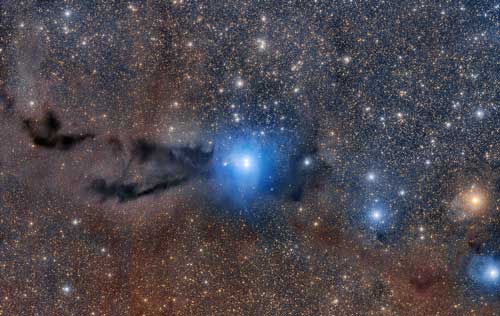 A dark cloud of cosmic dust snakes across this spectacular wide field image, illuminated by the brilliant light of new stars. This dense cloud is a star-forming region called Lupus 3, where dazzlingly hot stars are born from collapsing masses of gas and dust.
A dark cloud of cosmic dust snakes across this spectacular wide field image, illuminated by the brilliant light of new stars. This dense cloud is a star-forming region called Lupus 3, where dazzlingly hot stars are born from collapsing masses of gas and dust.
Jan 31st, 2018
Read more
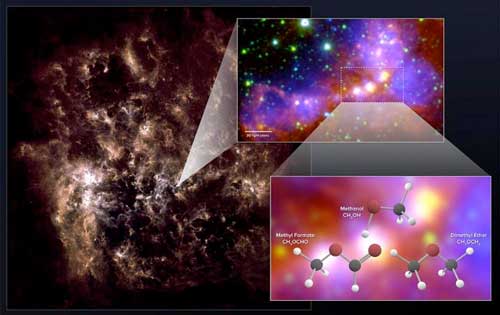 New observations in the Large Magellanic Cloud have uncovered the surprisingly clear chemical 'fingerprints' of the complex organic molecules methanol, dimethyl ether, and methyl formate.
New observations in the Large Magellanic Cloud have uncovered the surprisingly clear chemical 'fingerprints' of the complex organic molecules methanol, dimethyl ether, and methyl formate.
Jan 30th, 2018
Read more
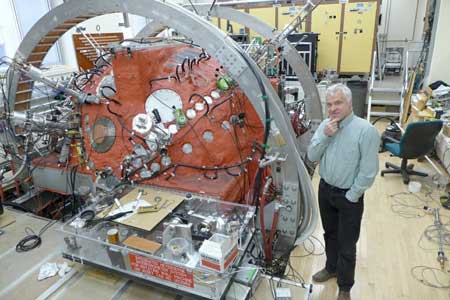 Space physicists have just released unprecedented detail on a bizarre phenomenon that powers the northern lights, solar flares and coronal mass ejections (the biggest explosions in our solar system).
Space physicists have just released unprecedented detail on a bizarre phenomenon that powers the northern lights, solar flares and coronal mass ejections (the biggest explosions in our solar system).
Jan 30th, 2018
Read more
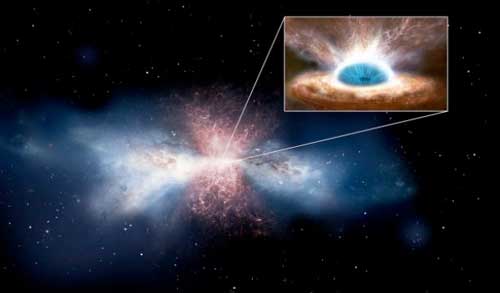 New theory predicts origins of molecules in destructive cosmic outflows.
New theory predicts origins of molecules in destructive cosmic outflows.
Jan 30th, 2018
Read more
 Scientists teach machines to analyze simulations of exotic subatomic 'soup'.
Scientists teach machines to analyze simulations of exotic subatomic 'soup'.
Jan 30th, 2018
Read more
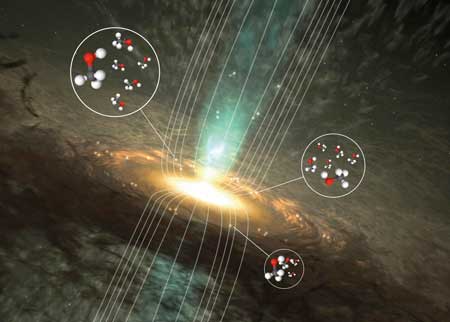 Scientists have solved an important puzzle in astrochemistry: how to measure magnetic fields in space using methanol, the simplest form of alcohol. Their results give astronomers a new way of investigating how massive stars are born.
Scientists have solved an important puzzle in astrochemistry: how to measure magnetic fields in space using methanol, the simplest form of alcohol. Their results give astronomers a new way of investigating how massive stars are born.
Jan 29th, 2018
Read more
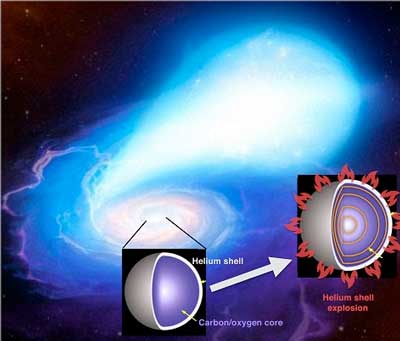 Scientists discover supernova's ignition mechanism.
Scientists discover supernova's ignition mechanism.
Jan 29th, 2018
Read more
 A new simulation of supermassive black holes uses a realistic scenario to predict the light signals emitted in the surrounding gas before the masses collide.
A new simulation of supermassive black holes uses a realistic scenario to predict the light signals emitted in the surrounding gas before the masses collide.
 Subscribe to our Space Exploration News feed
Subscribe to our Space Exploration News feed















